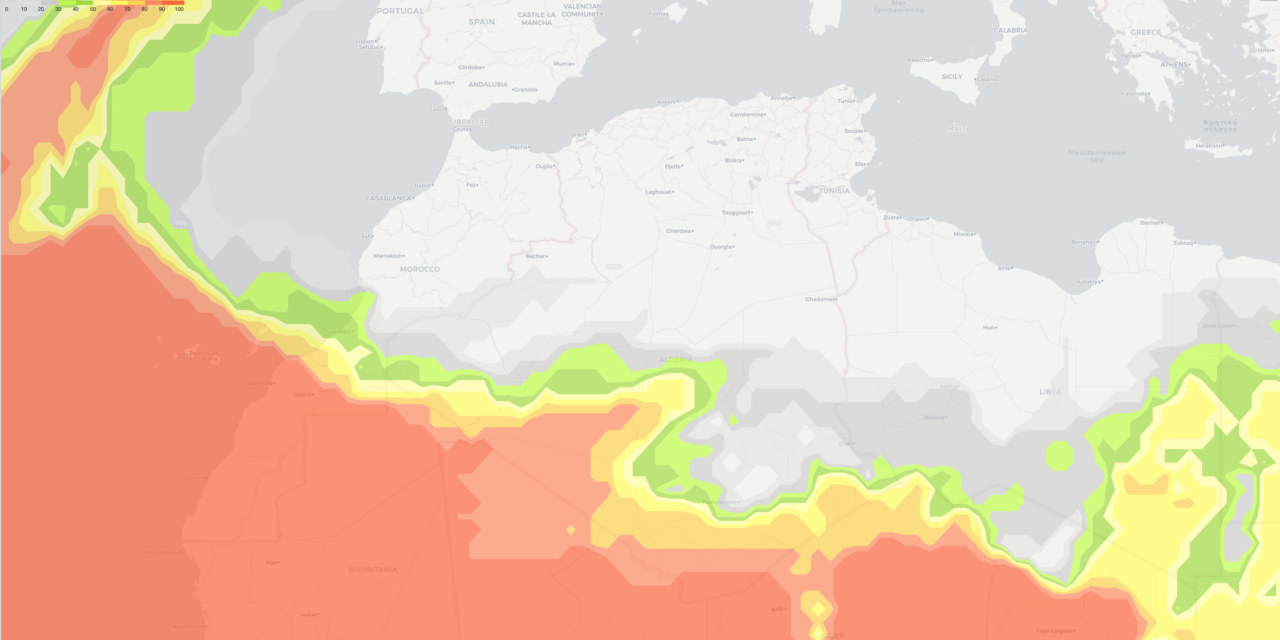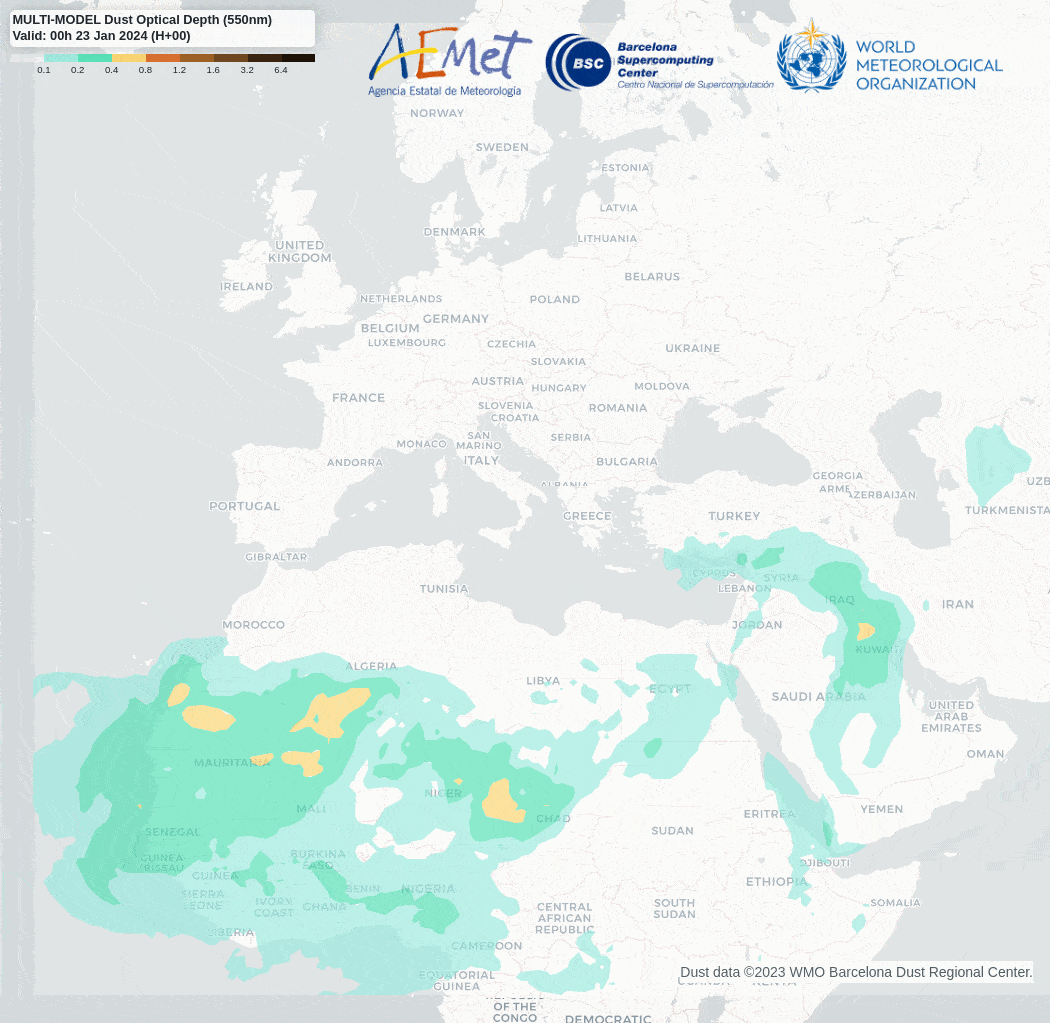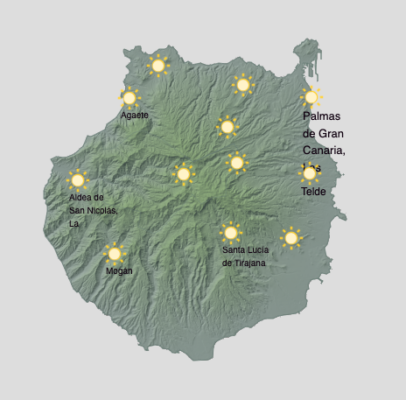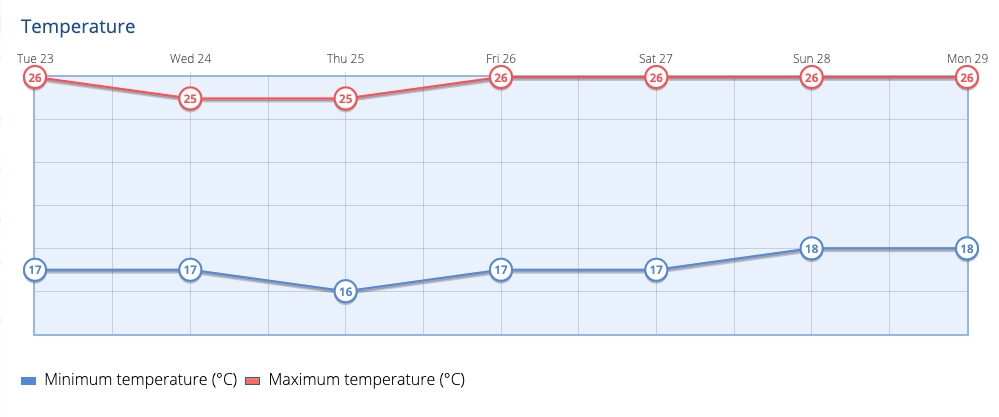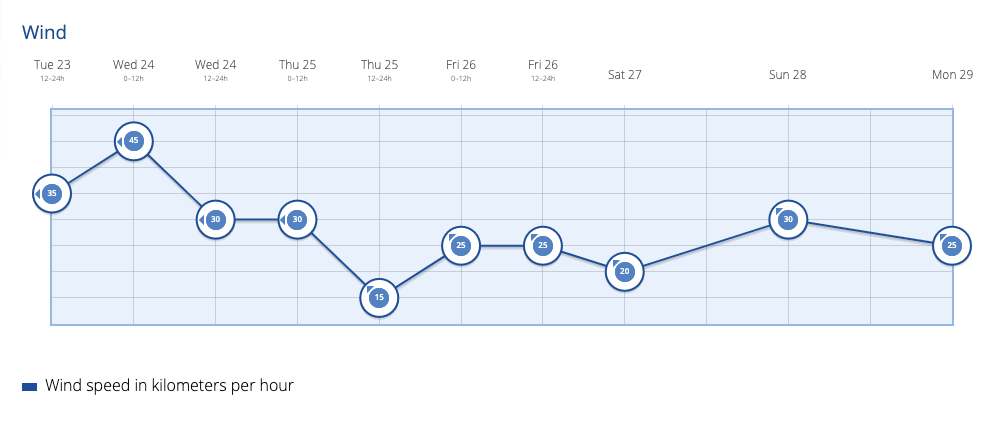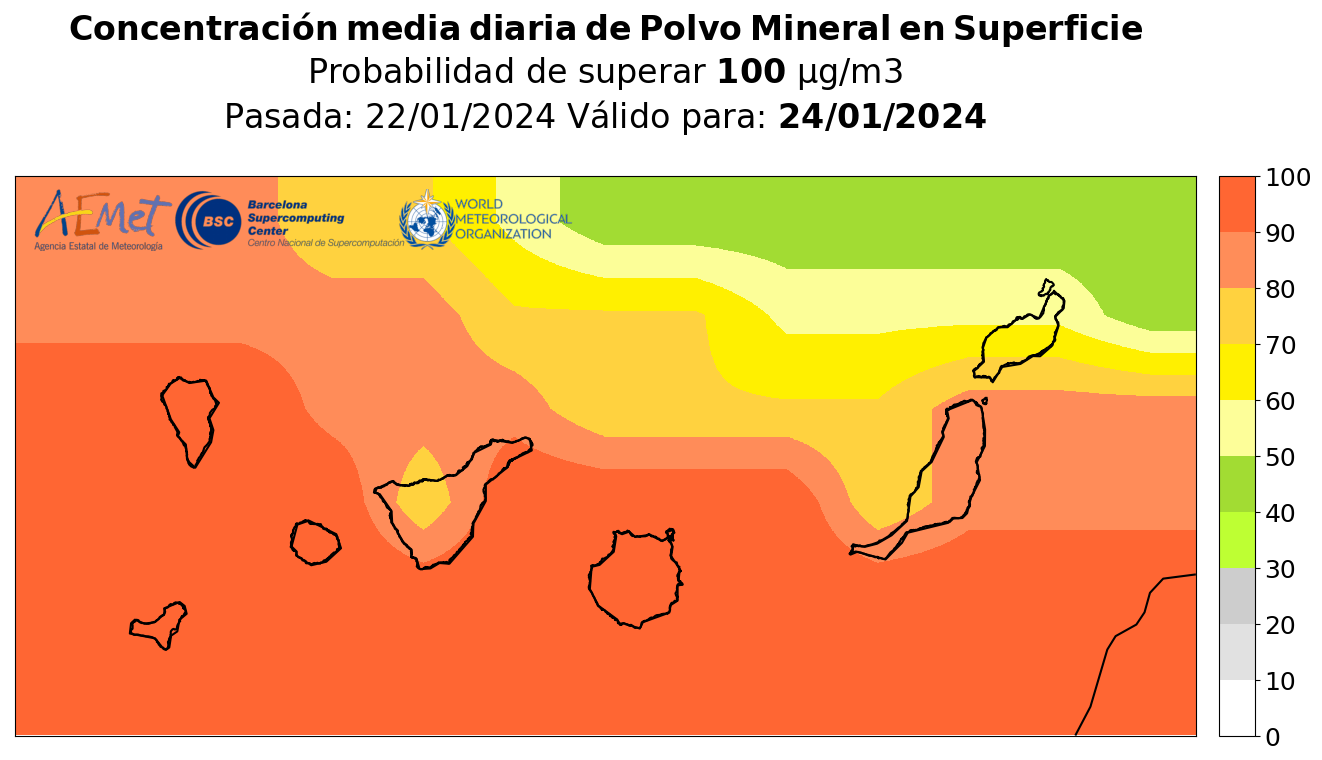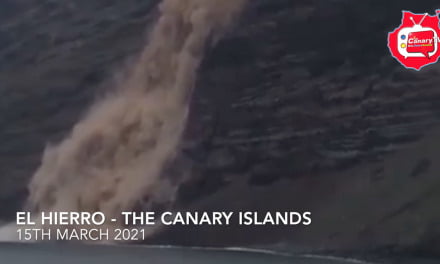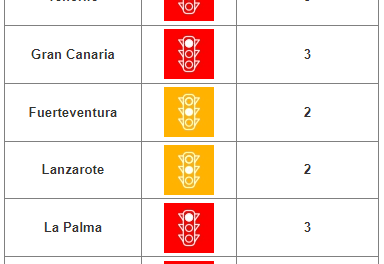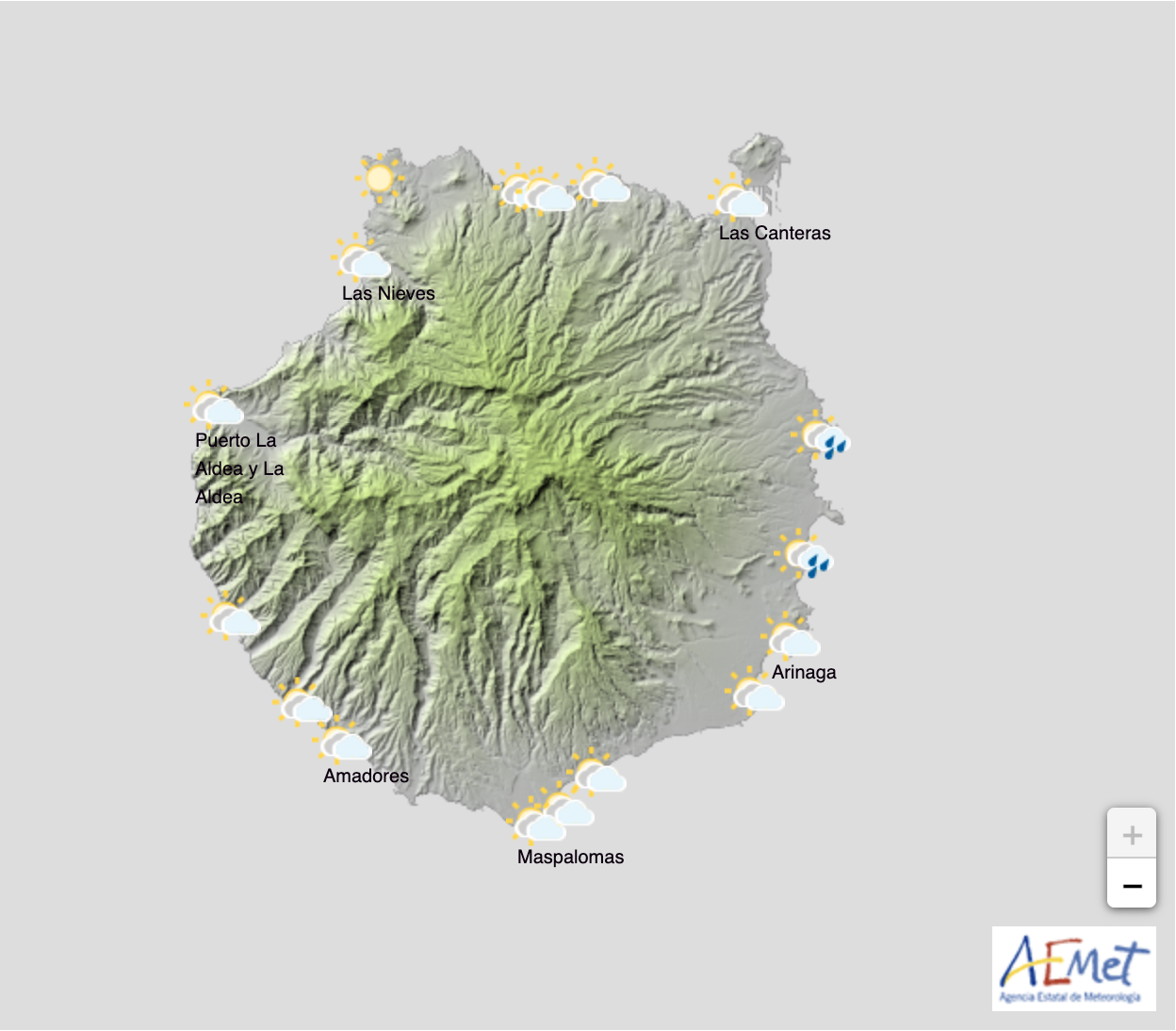Gran Canaria is experiencing a day marked by wind, calima (dust haze), and a slight drop in temperature. The Canary Islands Government’s Emergency Directorate has declared a wind alert in El Hierro and a pre-alert across the archipelago from 6:00 AM Tuesday. Simultaneously, a pre-alert for calima has also commenced. Southeast winds on the westernmost island of El Hierro, particularly affecting the northeast, El Golfo valley, and higher areas, are expected with gusts reaching 60-90 km/h. The rest of the islands, however, are experiencing moderate east and southeast winds, with strong gusts likely to exceed 60-90 km/h, especially in higher altitude areas. Gran Canaria will particularly feel these effects in the northern and western highlands and summits.
Pre-alerts are a state of readiness, in case a full alert may be required. the current episode of Calima, while more intense than usual, is unlikely to cause any serious alerts though care has been advised, particularly as very fine dust is known to have the potential or enter deep into the lungs when inhaled.
The current episode of Calima is expected to exceed 50 micrograms/m3, especially impacting the coasts and mid-altitude areas. Anyone with chronic or respiratory illnesses is advised to take extra precautions, avoiding the inhalation of dust suspended in the air, remaining indoors should visibility drop significantly. Temperatures of between 20º- 23º in the shade to the north, a few degrees higher in the south (as ever).
Wednesday will start with high altitude cloud intervals increasing by the afternoon. Calima will be more significant on the southern slopes, mainly during the first half and late hours of the day. Temperatures will remain steady or slightly decrease. Moderate east winds along the coasts, occasionally strong on northern and southern coasts; strong southeast winds at mid-altitudes and higher zones.
The medium and high clouds will continue into Thursday, clearing from the morning. Calima, will remain intense in some places, primarily affecting southern slopes. Minimum temperatures remaining stable, with a slight increase in maximums. Moderate east winds along the coasts, and moderate to strong southeast winds in mid-altitude and higher zones.
By Friday the skies should clear though strong Calima may remain, mainly affecting southern slopes. Stable minimum temperatures, with a slight increase in maximums. Moderate east winds on the coasts, and moderate to strong southeast winds in mid-altitudes and high zones.
As we head into the weekend, clear skies across the Canary Islands are expected. East winds will weaken compared to earlier in the week. Temperatures will rise slightly across the island.
Calima and particulates
Calima is a weather phenomenon common in the Canary Islands, where dust and sand from the Sahara Desert are carried over by the wind. This can lead to reduced visibility and air quality issues. Safe levels of particulates in the atmosphere are typically considered below 50 micrograms/m3. Higher levels can be hazardous, especially for individuals with respiratory issues. It’s essential for residents and visitors to stay informed about calima conditions and take appropriate precautions, such as reducing outdoor activities and using air filters indoors during high calima events.
Gran Canaria Exceeding Safe Particulate Matter Levels
Gran Canaria is currently experiencing a significant calima event, expected to bring airborne particulate matter concentrations higher than 50 micrograms per cubic meter. This natural phenomenon, while common in the Canary Islands, raises concerns due to the presence of PM10 and PM2.5 particles, known for their potential adverse health impacts.
Understanding PM10 and PM2.5 Particulates
Airborne particulate matter, or PM, is a complex mixture comprising various chemical species. These particles vary in size, shape, and composition, including inorganic ions, metallic compounds, elemental carbon, organic compounds, and earth crust compounds. PM10 particles, with a diameter of 10 microns or less, can be inhaled into the lungs, posing health risks. PM2.5 particles, measuring 2.5 microns or less in diameter, are fine particulates that form a portion of PM10 and are particularly concerning due to their ability to penetrate deep into the lungs.
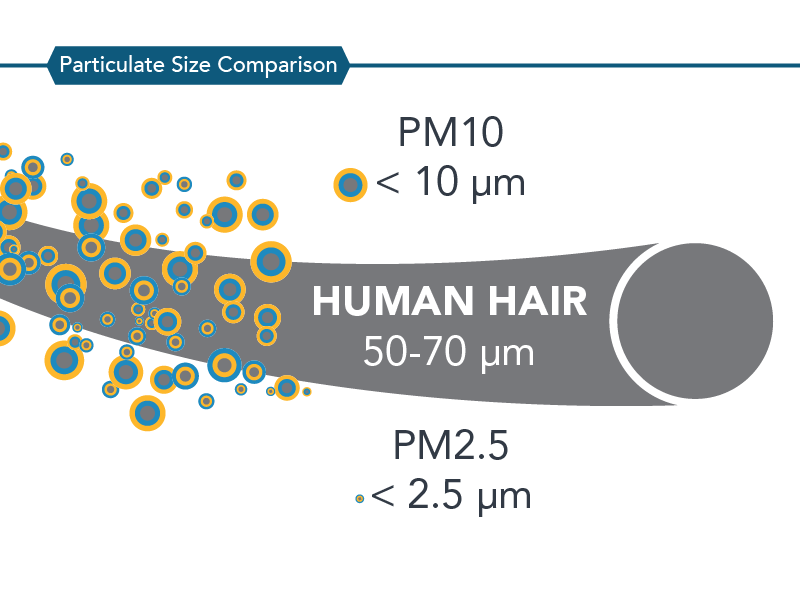
Emission Sources and Composition Differences
PM10 and PM2.5 differ in their emission sources and chemical compositions. PM2.5 often originates from the combustion of gasoline, oil, diesel fuel, or wood. It constitutes a significant portion of outdoor air pollution. PM10 includes larger particles like dust from construction, landfills, agriculture, wildfires, and industrial sources, as well as natural elements like pollen.
Both PM types can be primary particles, directly emitted from sources, or secondary particles formed through atmospheric chemical reactions involving sulfur dioxide (SO2), nitrogen oxides (NOX), and organic compounds from both natural and anthropogenic sources.
Health Impacts of Particulate Matter
Exposure to PM2.5 and PM10 is linked to various health issues. PM2.5 exposure, even short-term, is associated with premature mortality, heart and lung hospital admissions, respiratory conditions like asthma and bronchitis, and other serious health effects, particularly in vulnerable groups like infants, children, and older adults. Long-term exposure to PM2.5 is linked to premature death and reduced lung function growth in children.
PM10 exposure, particularly short-term, exacerbates respiratory diseases, leading to hospitalizations and emergency room visits. While long-term effects of PM10 are less understood, there is evidence suggesting a link to respiratory mortality. The International Agency for Research on Cancer (IARC) has identified particulate matter in outdoor air pollution as a cause of lung cancer.
Current Situation in Gran Canaria
The ongoing calima is causing elevated levels of PM10 and PM2.5, raising health concerns for residents and visitors, especially those with preexisting conditions. It is crucial to monitor air quality reports and take precautions, such as reducing outdoor activities and using air filtration systems indoors, to minimize exposure to these harmful particulates. The Canary Islands Health Authorities and environmental agencies continue to monitor the situation closely, providing updates and guidelines to ensure public safety during this natural event.

